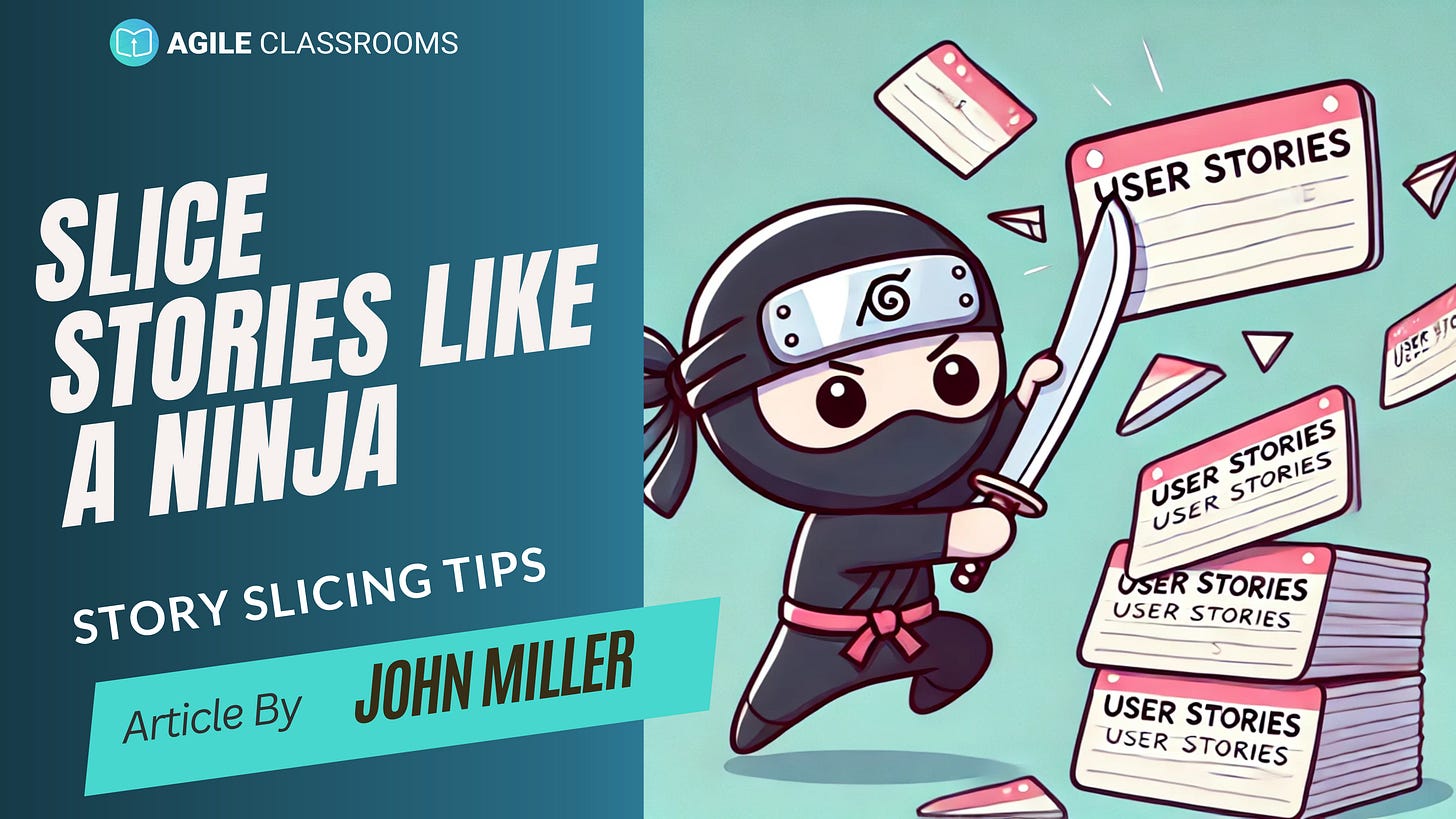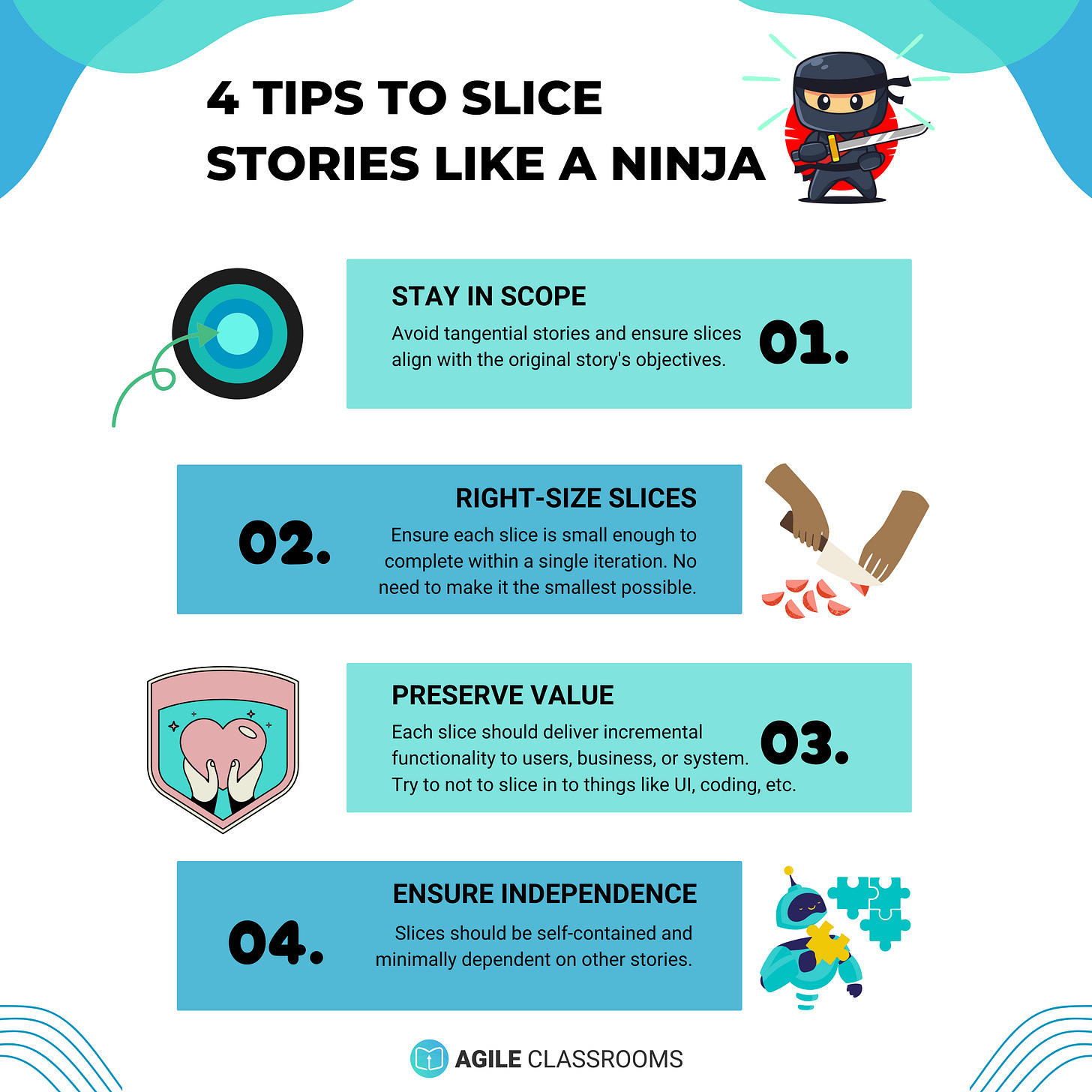Story Slicing Tips
Slicing Stories Like a Ninja
Story slicing in Agile product management can be tricky, but with the right approach, it becomes an art. Here are some sharp tips to help you slice stories like a ninja. Check out the infographic below for a visual guide, and if you’re eager for more, you can download it for free!
1. Stay in Scope
Avoid tangential stories and ensure slices align with the original story's objectives. The key here is focus. Imagine a sculptor chipping away at a block of marble—every strike of the chisel is purposeful, removing only what doesn’t belong.
Example:
If your original story is "Make it easy for users to manage their account settings," then creating a slice for "Allow users to sign in via social media accounts" would be out of scope. The latter is a new tangential story, not decomposed from the parent story of account settings management.
2. Right-Size Slices
A story slice should be small enough to complete within a single iteration but not so tiny that it loses its value or utility. Remember, we are not trying to split the atom—your slice should be manageable, not microscopic. Too large, and you delay getting feedback and adding value to users.
Rules of Thumb:
My rule of thumb: Aim to complete 3-5 stories in a Sprint (if using Scrum).
Others suggest each story should take roughly 2-3 days of development effort.
ProKanban suggests using the Service Level Expectation (SLE) for rightsizing. For more details, check out this article.
Example:
For a story like "Make it easy for users to find their content," an appropriately sized slice might be "Implement a basic search box that returns results from the user’s uploaded files." It's small enough to complete quickly but still provides significant functionality.
3. Preserve Value
Each slice should deliver incremental functionality to users, the business, or the system. Slices should be self-contained and minimally dependent on other stories. This is where the magic happens. Each slice should stand alone, delivering value without needing to lean on other slices to make sense. Avoid slicing into aspects like UI or coding separately, as they often depend on each other. No need to make it the smallest possible.
Example:
Instead of slicing a story into "Create UI for search" and "Develop search backend," combine them into a single slice that delivers a functional search feature. This way, the slice preserves value by being usable on its own.
4. Ensure Independence
Slices should be self-contained and minimally dependent on other stories. Making stories independent is crucial because it reduces complexity and dependencies, allowing teams to work on them without waiting for other parts to be completed. This leads to smoother workflows and fewer bottlenecks. Independence also allows for adaptability. If everything is daisy-chained, it makes it hard to move items around. Decoupled items promote agility.
Example:
For the story "Allow users to personalize their experience," a good independent slice might be "Enable users to change their profile picture." It’s a small, manageable task that can be completed in one iteration without relying on other stories.
Conclusion
When done right, story slicing is a powerful tool for keeping your value flowing smoothly. You'll be slicing through your backlog like a true ninja by staying in scope, right-sizing slices, preserving value, and ensuring independence. Want more? Download our handy infographic at learn.agileclassrooms.com.
So, next time you're faced with a big watermelon of a user story, remember these tips and slice it down to size like a fruit ninja. Your team will thank you, your work will flow smoother, and you'll deliver faster.
Download the Infographic
For a more detailed look at these tips, download our infographic here:
Stay sharp, work small, and deliver sooner!







